The pasta with artichokes and fresh fava beans or pasta alla vignarola with artichokes and fava beans is a simple yet delightful dish.
The vignarola – from vignarolo: gardener – is a traditional farmer’s recipe prepared upon returning from the vineyards, using legumes and vegetables grown and harvested among the vine rows.
It marked the transition from winter [the last artichokes of the season] to spring [early peas and fava beans].
I used only green fava beans, but it can be made with green fava beans and green peas or just with green peas.
FAVA BEANS AND DIABETES
– Can diabetics eat fava beans?
The glycemic index of fava beans [GI 40] is higher than that of other legumes and increases with cooking.
In cases of hyperglycemia, prediabetes, and diabetes, cooked fava beans should be consumed in moderation [always according to your dietary plan, ours includes them].
As generally suggested by Professor Enzo Bonora
In any case, it’s crucial to build an understanding of the impact of this and all other foods on blood sugar in the presence of diabetes. This means measuring before and two hours after eating it. Possibly more than once to get more reliable information. If the blood sugar increase is contained [less than 50 mg], you can put a ‘green sticker’ on that type of food. Otherwise, it’s better to avoid it.
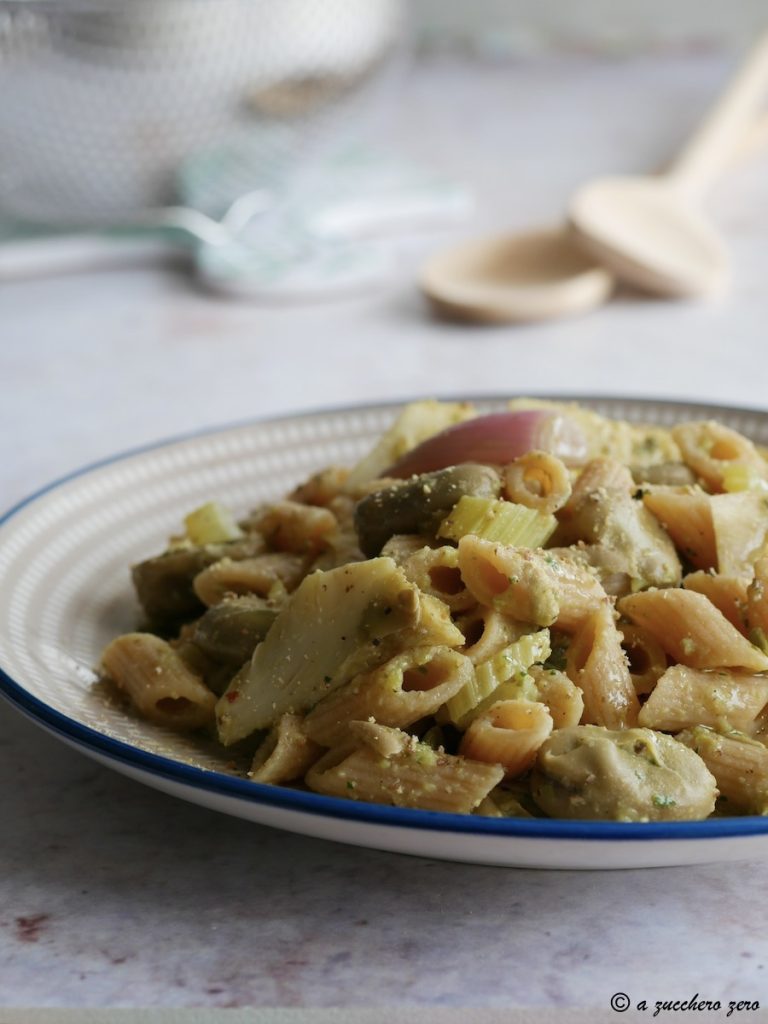
- Difficulty: Easy
- Cost: Economical
- Preparation time: 20 Minutes
- Portions: 2 People
- Cooking methods: Stovetop
- Cuisine: Italian
Ingredients
Fresh Fava Beans Raw and Cooked Weight
From one kilogram of fresh fava beans [weight with pod], I obtained approximately 375 g of fresh fava beans [without pod].
- 4.2 oz whole wheat penne rigate
- fresh fava beans (2 portions according to dietary plan)
- as needed onion (or shallot)
- 1 pinch garlic powder
- 1.7 fl oz water (+ as needed)
- 1 vegetable bouillon cube (homemade)
- 1 sprig parsley
- 1 pinch salt
- 1 pinch mixed peppercorns (with grinder)
- 4 artichokes (or 250 g frozen artichokes in wedges)
- as needed shallot (or onion)
- as needed celery (stalks and leaves)
- as needed lemon juice
- 3.4 fl oz water
- 1 vegetable bouillon cube (homemade)
- 1 pinch salt
- 1 pinch mixed peppercorns (with grinder)
- as needed chopped parsley
- 1 drizzle extra virgin olive oil (raw)
Suggested Tools
- 1 Knife
- 1 Cutting Board
- 1 Pan
Preparation
The guidelines for healthy eating list the following standard portions:
• fresh, soaked, or canned legumes 150 g;
• dried legumes 50 g.
⇒ remember that the measurements are personal.
Clean the fresh fava beans
Remove the fresh fava beans from the pod.
‘Pinch’ the fava beans, removing the stem and leaving them slightly exposed at the top.
If you’re not skilled at doing it with your fingers like grandmas do, use a knife to cut off a small piece of the fava!
Rinse the fava beans under running water.Stewed fava beans or fava beans in sauce
Peel the onion, remove the ends, and wash it.
You can add it whole, halved, or chopped according to taste.In a pan, heat a sprinkle of garlic powder.
Add the onion and let it wilt for a few seconds.
Add 1.7 fl oz of water and wait for it to sauté.
Pour the fava beans into the pan and let them brown.Add more water until it’s a finger above the fava beans, a vegetable bouillon cube, and parsley.
Stew the fava beans for about 10 minutes and, if necessary, add more water.
Add salt and grind the pepper.
Continue cooking for 30 to 60 minutes over low heat, making sure to:
• check the texture of the fava beans;
• add more water if necessary;
• stir to prevent the fava beans from sticking to the bottom of the pan as they dry.The cooking time for fresh fava beans varies depending on:
• the size and freshness of the fava beans;
• the desired texture.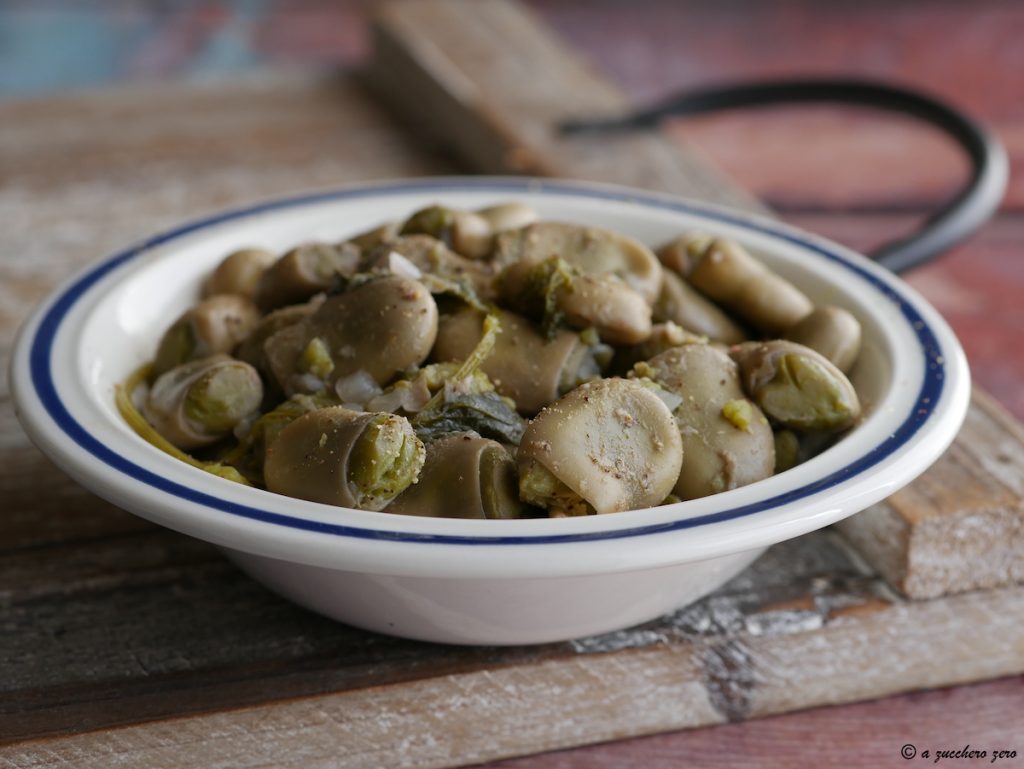
If using fresh artichokes, clean and blanch the artichokes following the procedure described in the tutorial how to clean and blanch artichokes.
Cut the artichokes into wedges.
I used frozen artichoke wedges.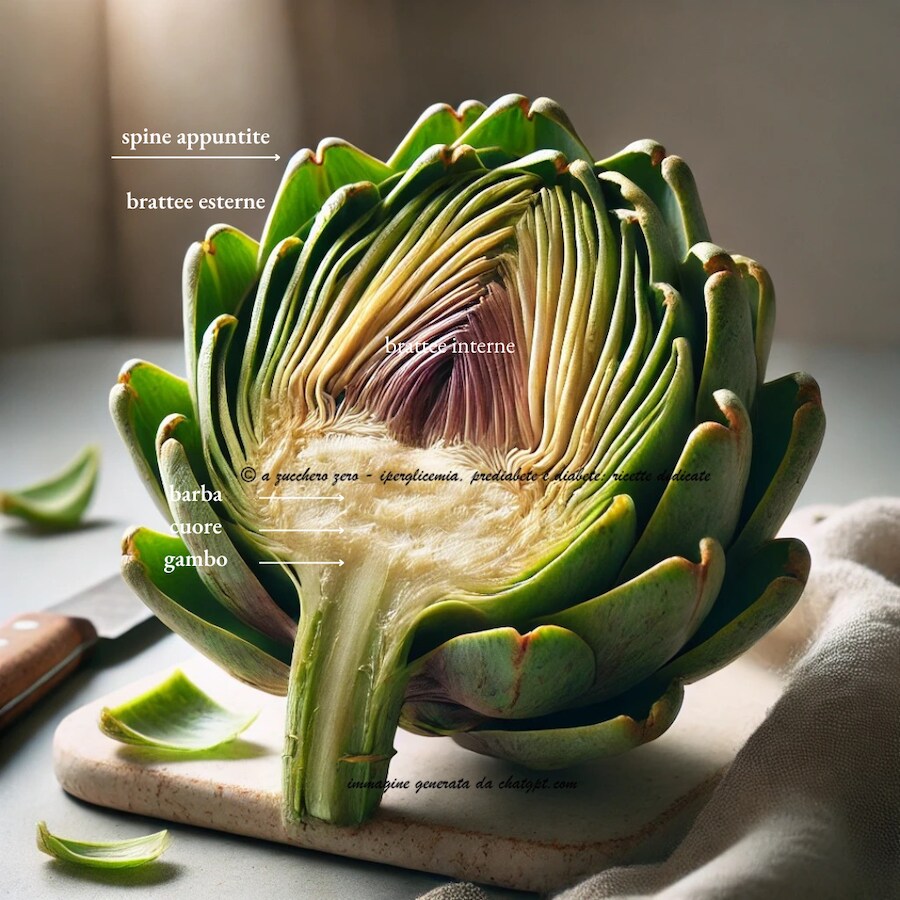
Clean and thoroughly wash the vegetables:
• shallot or onion;
• celery stalks and leaves.Cut the shallot or onion in half or quarters.
Cut the celery stalks into chunks and separate the leaves.In a pan, pour:
• the artichokes or still-frozen artichokes;
• a pinch of salt;
• lemon juice;
• 3.4 fl oz of water;
and cook with a lid on high heat for 5 minutes.Add:
• shallot;
• celery;
and cook with a lid on low heat for 5 minutes.With the heat off, add:
• a vegetable bouillon cube;
• the stewed fava beans;
and incorporate by stirring, the more you stir, the more the fava beans break apart.
Adjust salt and grind the pepper.Cook the pasta, rinse it under running water, and drain it.
In the meantime, bring the vignarola with artichokes and fava beans to a boil.
Add the chopped parsley.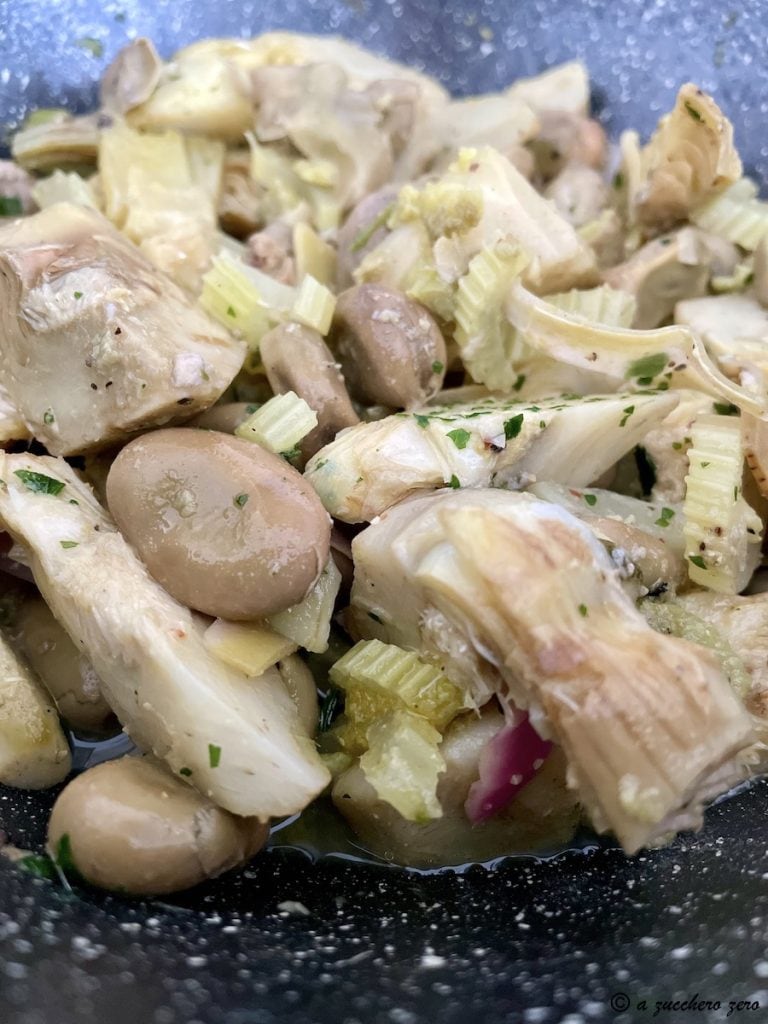
Pour the pasta into the pan with the vignarola with artichokes and fava beans.
With the heat off, drizzle with a thread of oil and mix.Plate.
Grind a bit more pepper.Your pasta with fresh artichokes and fava beans is ready.
Enjoy your meal.
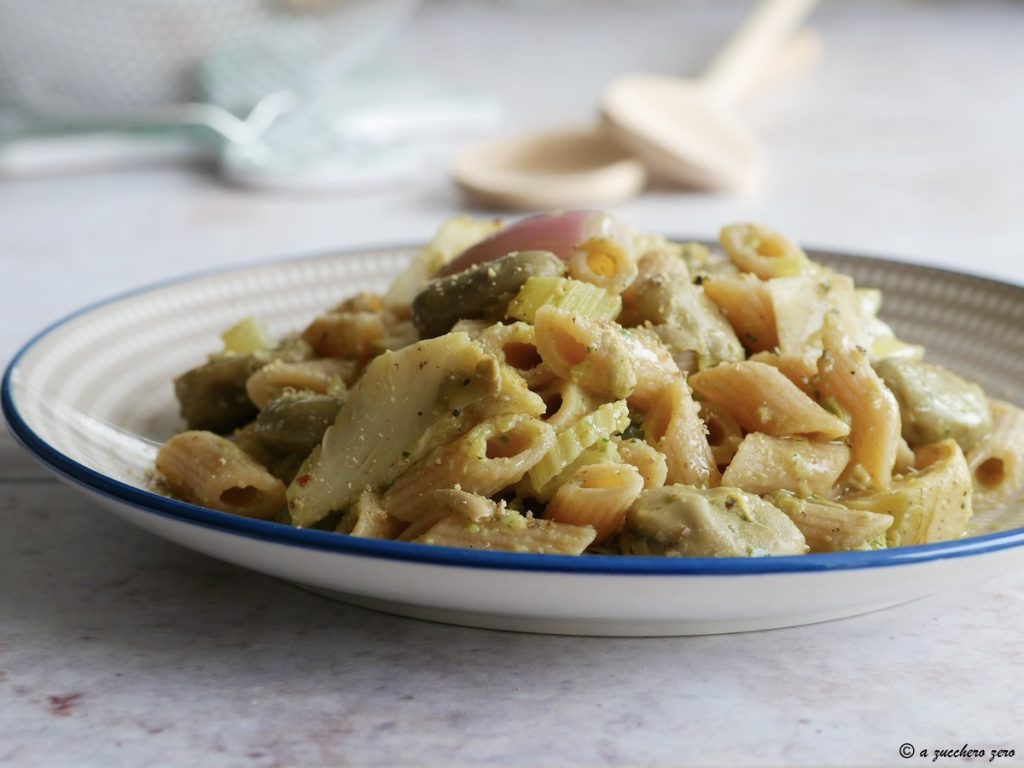
Tips for pairing legumes
Pairing with pasta, rice, or other cereals allows for better absorption of the proteins in legumes.
The cereals included in these dishes, in fact, compensate for the amino acids lacking in legumes, resulting in a complete amino acid pool.
Choose cereals preferably whole grain.
To learn more: how to pair legumes in the diet.
FAQ (Questions and Answers)
Can diabetics eat fava beans?
The glycemic index of fava beans [GI 40] is higher than that of other legumes and increases with cooking.
In cases of hyperglycemia, prediabetes, and diabetes, cooked fava beans should be consumed in moderation [always according to your dietary plan, ours includes them].
As generally suggested by Professor Enzo Bonora
In any case, it’s crucial to build an understanding of the impact of this and all other foods on blood sugar in the presence of diabetes. This means measuring before and two hours after eating it. Possibly more than once to get more reliable information. If the blood sugar increase is contained [less than 50 mg], you can put a ‘green sticker’ on that type of food. Otherwise, it’s better to avoid it.How to make fava beans more digestible?
It’s better to use small and tender fava beans so that the skin is pleasant to eat; otherwise, in the case of large and hard fava beans, remove the skin if it’s too fibrous.

